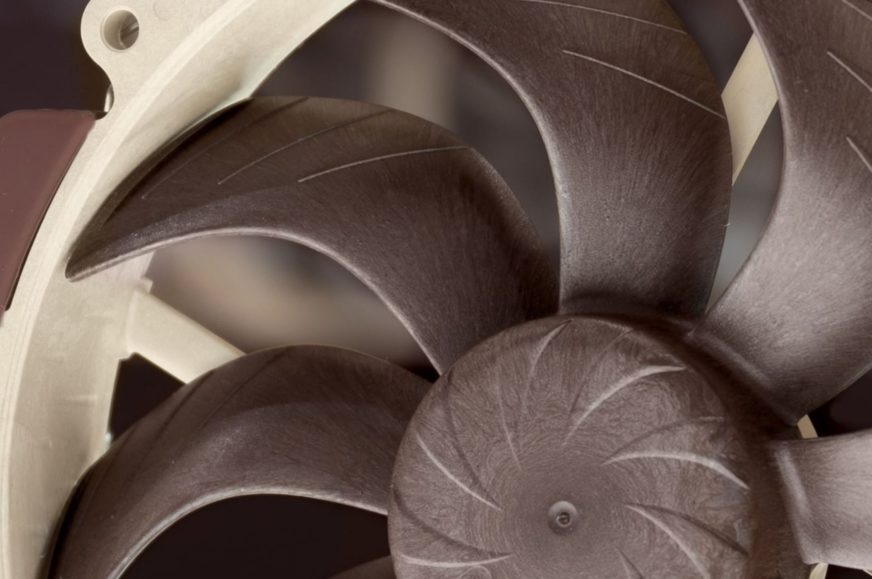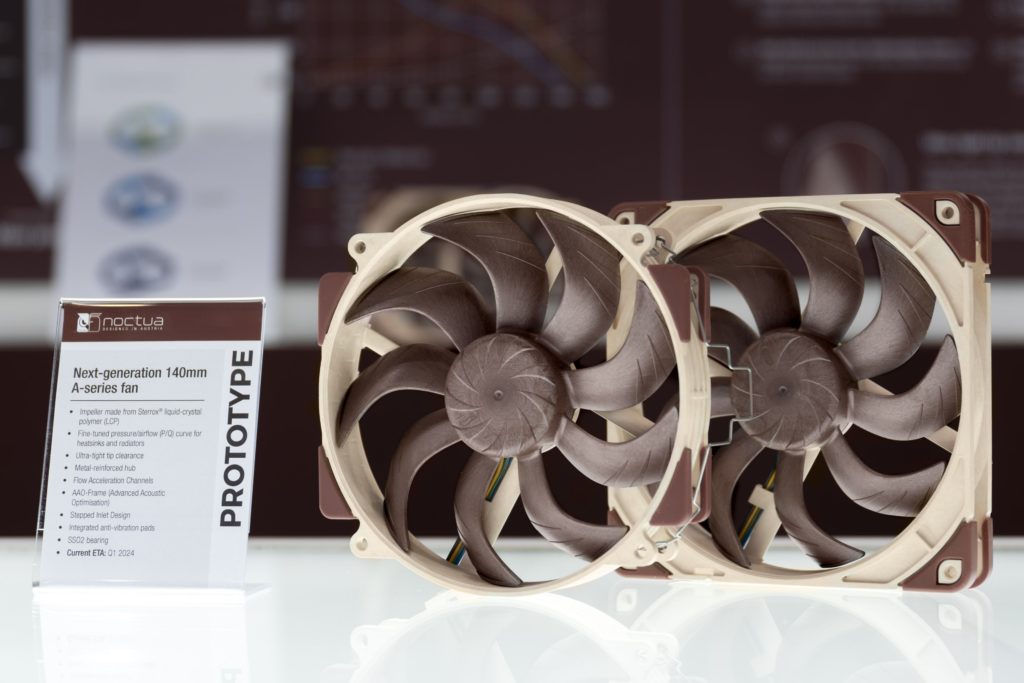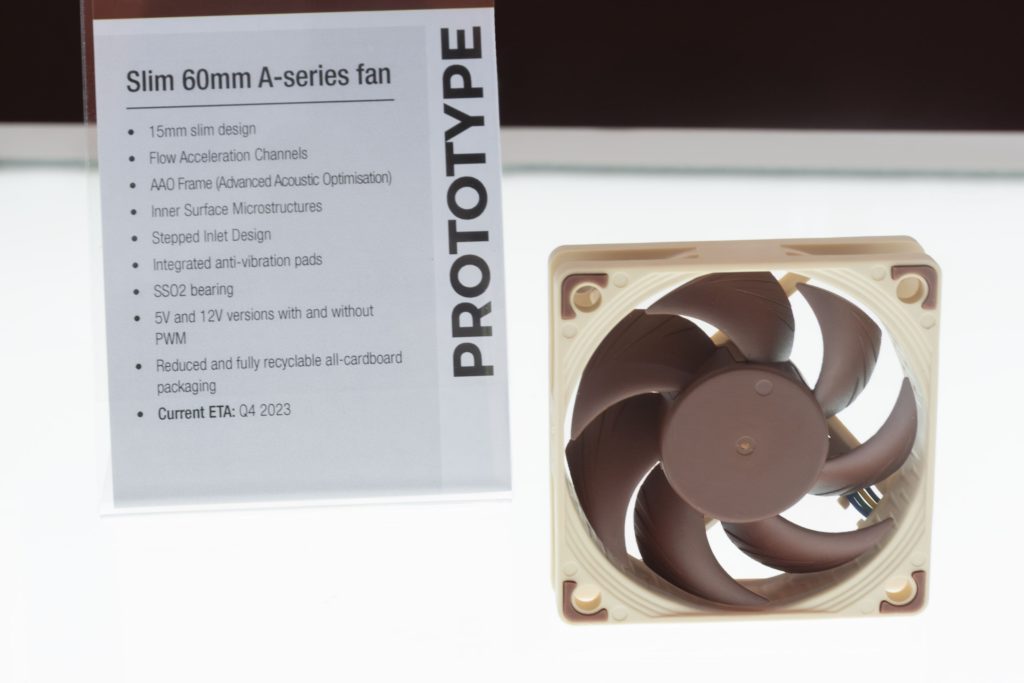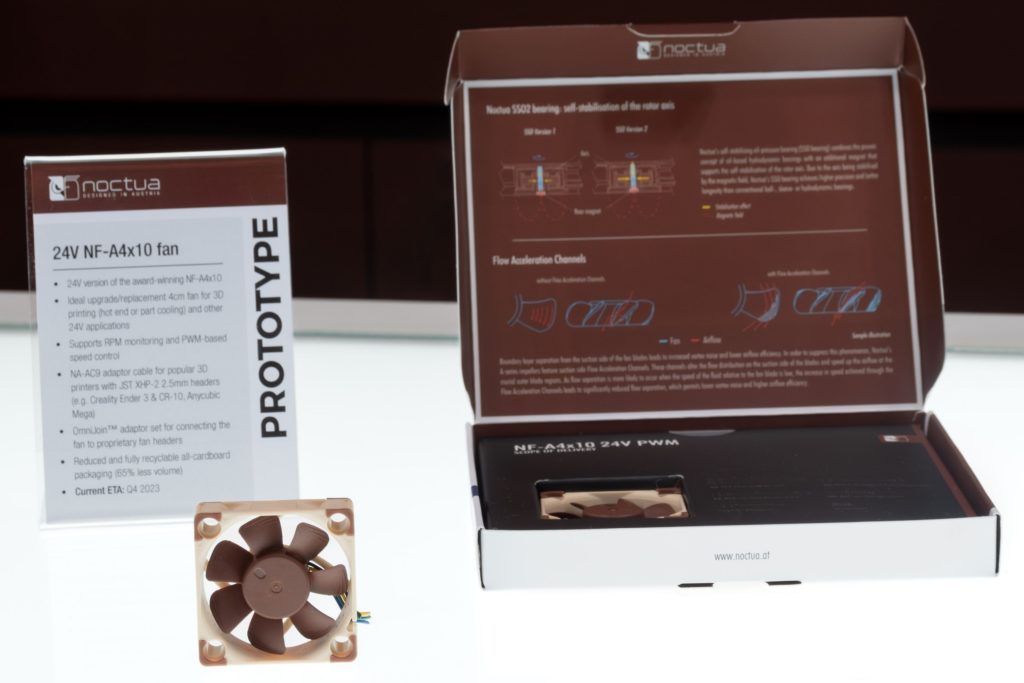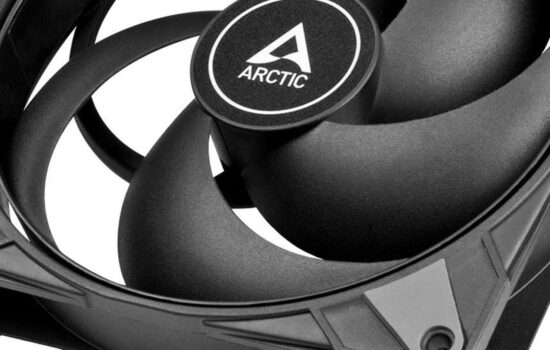Exhibition of upcoming Noctua fans
Noctua first revealed the design of the new 140mm fans a few days ago, but we’re just now bringing you the news. We needed to communicate a few details with Noctua to make the intentions behind the key elements clear. After all, these fans certainly don’t look like anything you’ve seen before and it’s likely that some of their unique details will become inspiration for other manufacturers as well.
For this year’s Computex (23), Noctua brought, among other things, the long-prepared new generation of 140-millimeter fans. They are referred to as a prototype, but this is already the final stage and they will go on sale in the presented form, which is planned for the first quarter of 2024.
Humpy blades?
Unlike the 120mm NF-A12x25, which had a very good design reference in the Gentle Typhoon D1225C, there was nothing among the 140mm fans that was “just a matter of fine-tuning the details”. There was no template, so Noctua had to initiate a development process that took eight years, and over time the shape of the rotor changed in various ways. Noctua knew from the start that it would use blades with distinctly curved leading edges, but the exact shape was not entirely clear.
In 2017, Noctua believed that very small blade gaps would be the way to go, so that the least amount of air would escape through the rotor due to back pressure. Back then, the rotor had up to ten blades and bore a striking resemblance to the 120mm BeQuiet! Silent Wings Pro 4. A year later (2018), one blade dropped out of the design, the gaps between the blades were increased, but there was one element added to the blades that Noctua stuck to until the end – a sort of center curve. Its key role is to make the aerodynamic load on the blades as even as possible.
On “normal”, smoothly curved blades, efficiency decreases towards the hub and can be increased by adjusting the angle, making it slightly different than the blades have from the middle to the tips. This creates a hump in the geometry in front of which the fan can push more air compared to traditional fan solutions . In 2019, Noctua went back to the super-narrow blade spacing again, but ended up making them wider by making the blades slimmer.
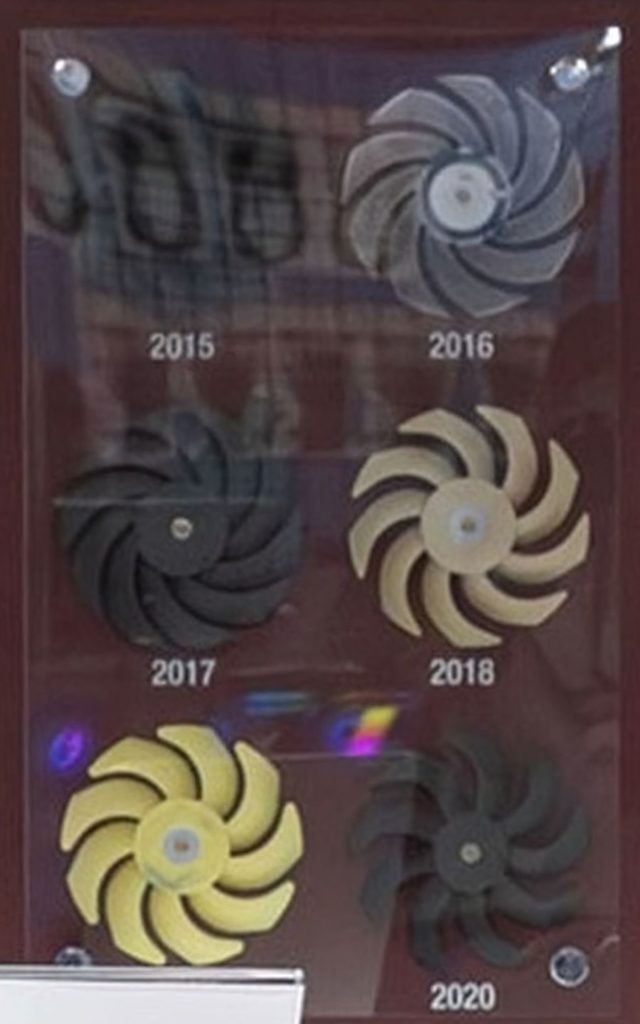
We asked Noctua about all the steps, and this is a very complex topic on which “a whole book could be written.” In simplicity, however, it can be noted that although smaller gaps mean less room for air streams to escape, you always have to calculate at what noise level the fan is operating at. This shapes the efficiency of the fan (in terms of cooling performance per dBA) and larger gaps should be more acceptable in this respect. That is, noise decreases faster than static pressure.
Since 2020, the basic shape of the rotor hasn’t changed much and small surface level details have started to be built around it. Most of them you already know from the NF-A12x25 (PWM) – the Flow Acceleration Channels on the trailing edges of the blades, the Stepped Inlet Design, and the Inner Surface Microstructures on the inner surface of the tunnel. The latter creates a turbulent layer which creates more resistance and therefore less airflow escapes around the perimeter, around the blade tips, than if the wall were smooth and the air action in these places would be less turbulent.
The ends of the blades are characterised by small winglets which, in addition to guiding the more turbulent air streams, are also stiffening at critical points. As for the gap between the blade tips and the frame, it is slightly larger than in the NF-12×25 fan. Instead of 0.5 mm, here it’s 0.7 mm. This small increase was necessary because with the longer blades of a 140mm fan, there is naturally less control when it comes to clearance at the tips. Although minimal vibration can be expected due to the solid sterrox-based LCP material, it will still be slightly higher than a fan (NF-A12x25) with shorter and less flexible blades.
Centrifugal Turbulator…
Aerodynamic protrusions are also on the hub for the first time. Their role is to locally increase turbulence and such streams can then better fit in this area and increase the overall fan airflow. This finally makes use of the inner part of the cross-section, which in most fans has no influence on efficiency.
Compared to the NF-A12x25 fan, the hub also has a slightly smaller cross-section, which leaves more surface area for the blades. Its robustness should not be compromised by this, however. Not to the extent that it could reflect negatively on anything in practice. It still contains metal reinforcement.
… and various frames
The fan bearings remain SSO2s, you already know the anivibration pads as well. The fans will exist with two different frames. Only the outer shapes are changed. The variant with the “circular” frame is more suitable for tower heatsinks (and will be used on the successor of the NH-D15 cooler). The placement of anti-vibration pads on them is also more practical. However, the square frame variant will already be more suitable for liquid cooler radiators. This is because its corners better plug gaps that would otherwise reduce static pressure and airflow through the fins, similar to the various corners of the BeQuiet! Silent Wings Pro 4, which we’ve also tested in detail.
The mounting holes on the square-framed fan are standard as they are on 140 mm fans (124.5 × 124.5 mm) and on the round-framed fan they are as they are on 120 mm fans (105 × 105 mm). With this in mind, the square frame variant is more suitable inside cases for system cooling. If you could fit the circular variant in the case, its grille will usually allow for only a smaller format.
Small fans next to the big ones
The next period will not only be about large (140 mm) fans, but also about small (60 mm and 40 mm) fans, which according to the current roadmap should come out even sooner.
The “A” series in 60 mm format will be expanded by a thinned-down fan with a 15 mm profile. Unlike current models, it has curved blades to achieve the highest possible efficiency. It will be available in 5 V and 12 V variants, with and without PWM control (DC, with 3-pin).
Even smaller (40 mm) and slimmer (10 mm) NF-A4x10 fan is already available from Noctua, but only for 5 or 12 V. Prospectively (also tentatively listed for Q3/2023), however, a 24-volt variant will also be added, which is primarily intended for 3D printers using a 24-volt power supply. Also included will be the NA-AC9 adapter for popular printers with the JST XHP-2 2-pin connector.
You’ve got the fan part out of the way. We will discuss the cooler that Noctua presented at Computex 23 later in a separate article.
English translation and edit by Jozef Dudáš





